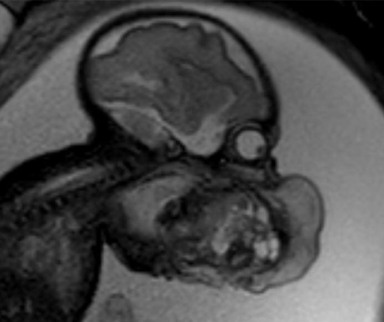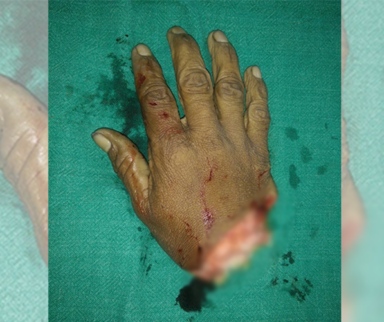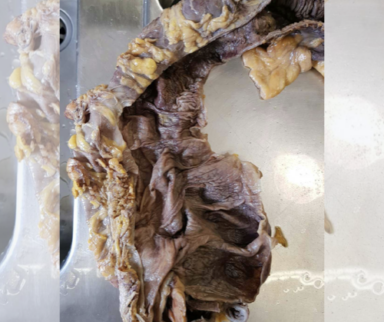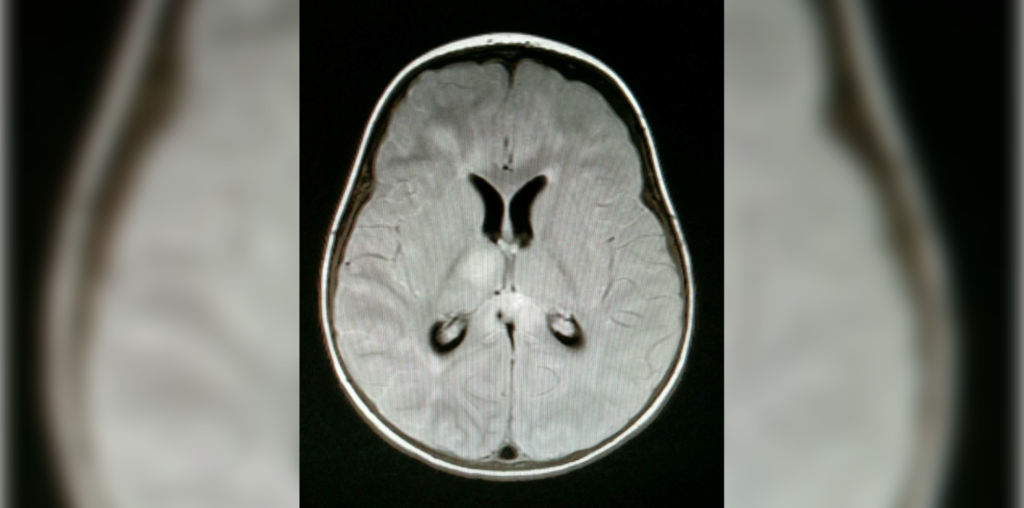
Healthcare professionals are sharing content every day in Figure 1. Here are the top five most interesting medical cases in neurology trending within the community.
#5. A Serious Injection Site Reaction
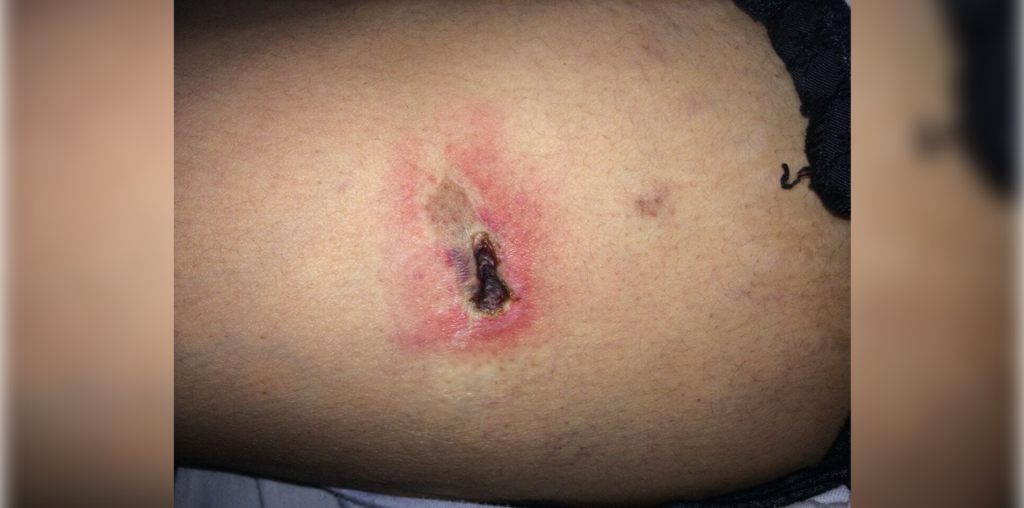
At #5 in the most interesting medical case in neurology is this serious skin lesion. After a subcutaneous interferon injection, this 30-year-old patient with a history of multiple sclerosis developed this skin site reaction. “We had a patient with reactions very similar, on each thigh” said one registered nurse and Figure 1 member. “I have MS and this happened to me,” shared another Figure 1 member.
As it turns out, the Interferon beta-1b injection is commonly associated with the development of cutaneous necrotic ulcers. Interferon beta-1b injection is used to decrease flare ups in patients with relapsing-remitting multiple sclerosis, or RRMS. Luckily, there are alternative interferon options available without the risk of necrotic ulcers. Because, as one Figure 1 member said, “as if the disease itself isn’t bad enough.”
Have you seen an injection site reaction like this before? View the case to see all the images.
#4. Cool as an Ice Cube
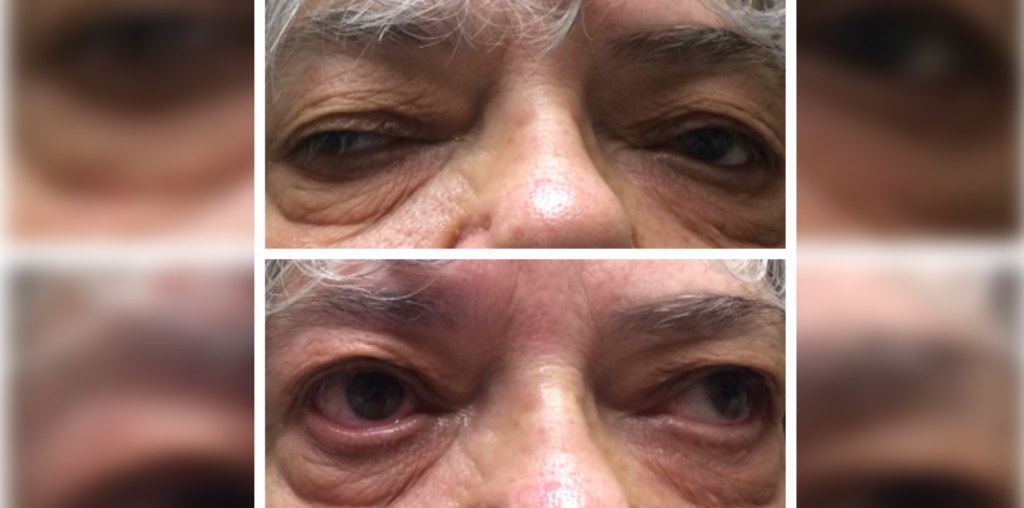
Next on our list at #4 is this fascinating before and after image of a patient with myasthenia gravis. According to the Figure 1 member who shared the case, the patient spent tens of thousands of dollars in medical visits trying to diagnose her condition. But it wasn’t any high-tech medical device or invasive exam that did it. Instead – it was an ice cube test.
You see, extraocular muscle weakness is a symptom of myasthenia gravis, and this can be tested by having the patient gaze upward and hold that eye position in place. For patients with myasthenia gravis, this results in double-vision and ptosis, or dropping of the eye. “A clever physician,” explained a Figure 1 member, placed an ice cube on the patient’s eyelids for 30 to 60 seconds and it resulted in transient improvement of the ptosis. An improvement of the ptosis, a 2 mm rise or more, is a positive indicator of myasthenia gravis.
Do you know the mechanism of action behind this simple test? View the case to learn more.
#3. More Than Just a Rash
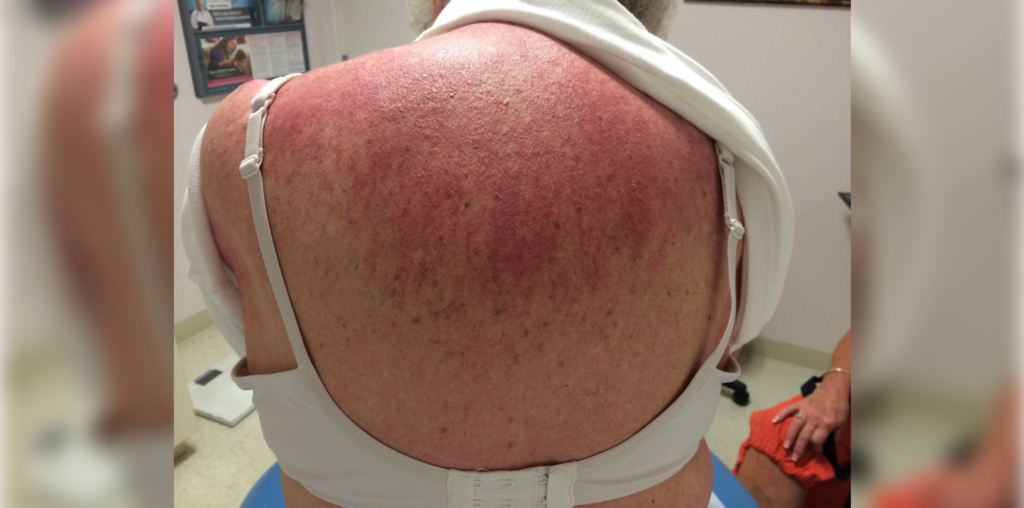
Third on the list of most interesting medical cases in neurology is another interesting skin assessment. “Wow, this is great!” said a family practice Figure 1 member.
Dermatomyositis is a type of inflammatory myopathy, or disorder of the skeletal muscles, that can manifest in skin changes. In this case by a rheumatology Figure 1 member, a classic “shawl sign” is seen. This diffuse, flat, reddened area appears on the patient’s upper back, shoulders, and back of the neck.
How would you manage this patient’s case? View the case and join the discussion.
#2. Bold Bolts
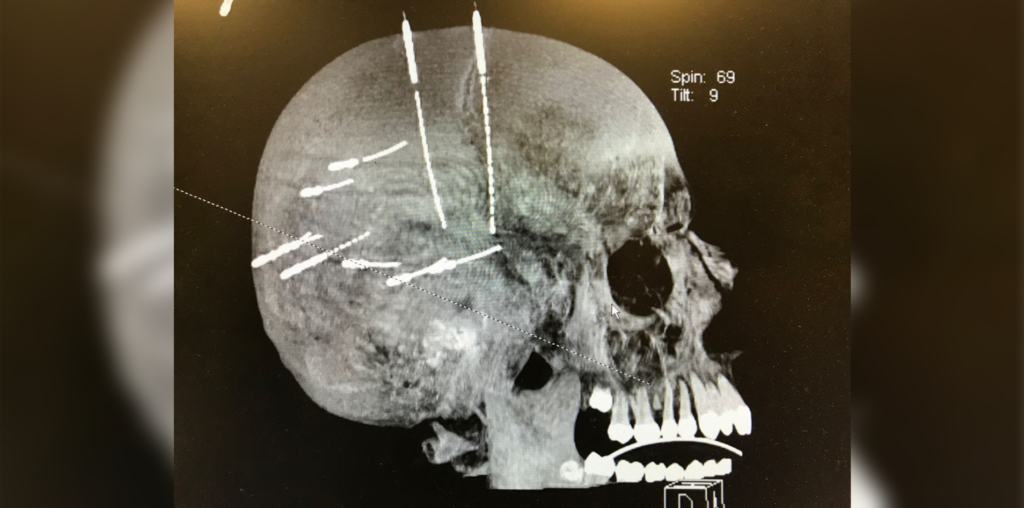
Our #2 case from a physician assistant and Figure 1 member is a teenage patient being worked up for medically intractable epilepsy. The patient underwent implantation of stereotactic depth electrodes, or sEEG, which were placed into the regions of the brain believed to be where the patient’s seizures originate from.
In this awesome CT image, we can see where the bolts are placed into the skull, holding the depth electrodes in place. Because of its precision in pinpointing the location of seizure onset, treatment is effectively targeted to those areas.
Are you familiar with the advantages of sEEG in the treatment of epilepsy? View the case to see what your colleagues are saying.
#1. Infarcts Too Numerous to Count
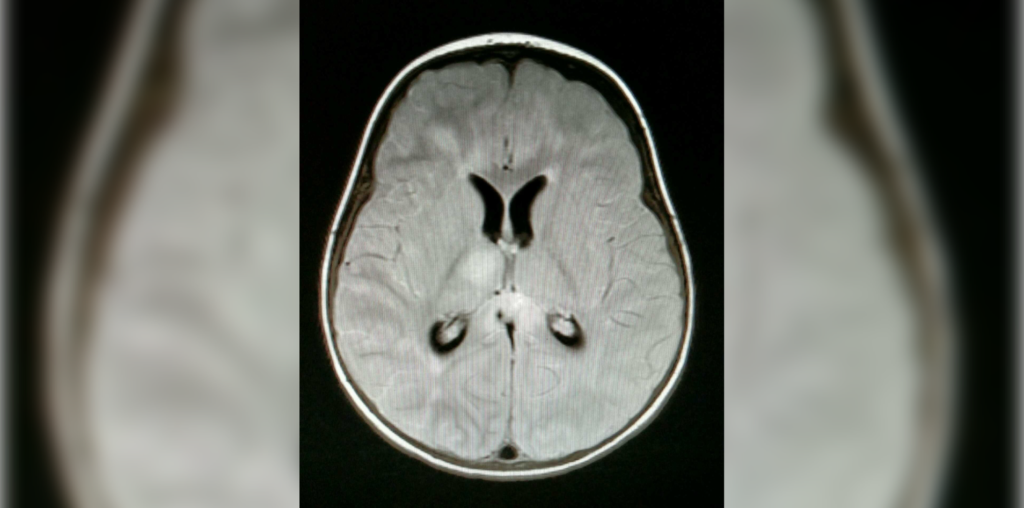
And last but certainly not least, coming in at #1 on our most interesting medical cases in neurology list is a case of a 22-month-old patient with meningitis and encephalitis. In the scan images provided by technologist and Figure 1 member, the diffuse inflammatory changes of the brain and numerous infarcts can be seen.
Upon presentation, this patient was having febrile seizures and was minimally responsive to stimulus.
What interventions should be done next for this infant? View the case to see more images.
Published March 21, 2022
Join the Conversation
Register for Figure 1 and be part of a global community of healthcare professionals gaining medical knowledge, securely sharing real patient cases, and improving outcomes.

